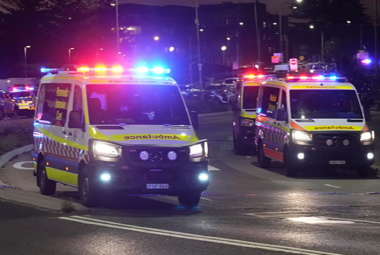FOR IMMEDIATE RELEASE
A NEW CLIMATE COUNCIL REPORT comparing Australia’s states and territories has found Queensland has rocketed up the rankings from climate laggard to solar leader in just a few years, while other governments are speeding ahead with electric homes and vehicles, and stronger plans to cut climate pollution.
“The amount of clean energy powering our homes and businesses has doubled in just six years. Our main national grid is often powered by at least 40% renewables, and the states have been key to this progress,“ said Climate Councillor and former energy executive Greg Bourne.
The Race to the Top report, which compares states and territories’ progress on important shifts like rooftop solar, home batteries, electric vehicle registrations and more, has found the most populous states are enhancing their plans to cut climate pollution, while South Australia, Tasmania and the ACT are already powered by close to 100% clean electricity.
“Most states have grasped that this is the critical decade, but there is plenty of work still to do. Our kids’ futures depend on the choices we make now, and there is no time to waste,“ said Climate Council CEO Amanda McKenzie. “Australia’s ‘race to the top’ on climate is bringing enormous opportunities, particularly for Queensland, which now leads the nation on rooftop solar and clean energy investment.”
Alarmingly, the report also found Western Australia and the Northern Territory’s ongoing expansion and approval of highly-polluting gas projects is undermining national efforts to cut climate pollution and protect Australians from worsening unnatural disasters.
"As a West Australian, I'm confident this great state can catch up by embracing clean energy to power its homes, businesses and industry alike,” said Councillor Bourne. “We know the way forward and Queensland has shown things can turn around quickly. No one wants to remain at the back of the pack.”
Key findings include:
| State | Leading on | Needs to work on |
| Queensland | Rooftop solar panels have been installed on 50.2% of houses, the greatest share of any state. | Boosting household batteries (0.86% of houses have solar + batteries) and increasing shared transport use (6.1%). |
| New South Wales | NSW has the greatest share of residents ditching polluting cars for shared transport trips (13.1%). | Approvals of renewable energy projects, big batteries and transmission lines, which are taking 2-3 times longer than other states. |
| Victoria | Household electrification. Victoria’s Gas Substitution Roadmap is a leading plan for slashing climate pollution and electrifying homes. | Adding more rooftop solar. Only 28.1% of Victorian houses have solar, well behind most other jurisdictions. |
| South Australia | SA has the greatest proportion of households with solar and batteries (2.86%), and often gets 100% of its power supplied by renewable sources. | Phasing out support for polluting gas. |
| Western Australia | WA leads on battery and critical minerals research, and ranks third on household solar installation (44.6% of houses), behind only Qld and SA. | Increasing its share of renewables. WA gets only 17.6% of its electricity from renewable sources and is set to increase climate pollution by extracting more gas. |
| The ACT | ACT has the highest electric vehicle uptake (6.8 per 1000 people) and purchases 100% of its electricity from clean energy sources. | Canberra has the lowest shared transport use of any Australian capital (3.1%) with limited services in spread-out suburbs. |
| Tasmania | Tasmania leads on hydropower generation, and has the strongest renewable energy targets of any state or territory (greater than 100% by 2030). | Hobart ranks second-last of all Australian capitals for uptake of shared transport (just 3.4% of trips in Hobart are by bus) |
| Northern Territory | NT ranks third for the rollout of household batteries alongside rooftop solar (2.51%), slightly behind SA and ACT. | Improving its commitment to cut climate pollution and reducing support for new gas projects. |
Case studies available for interview:
Queensland:
- First Nations owned and operated solar company (Cairns/Brisbane)
- An energy company behind large scale projects (Gladstone)
New South Wales:
- Australia’s largest solar farm using reused/refurbished panels
- An Australian-first project helping renters get benefits of solar
- Retired power station engineer with solar off-grid house in the Hunter
Victoria:
- A Geelong organisation helping charities save on energy bills with renewables
- A Melbourne veterinary practice that’s doubled business while saving $7000 per year on power bills
Western Australia:
- An engineer helping more than 100 remote communities negotiate to ditch expensive diesel generators.
South Australia:
- A winemaker powering his winery through an EV
ACT:
- A retiree who is saving on bills and cutting pollution with solar panels, a battery and an EV.
The Race To the Top Report can be found here: https://www.climatecouncil.org.au/resources/race-to-the-top-australias-clean-energy-momentum/
ENDS
Contact details:
For interviews please contact Jacqui Street [email protected] or 0498 188 528


